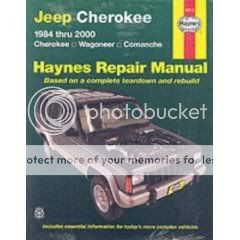Not exactly - he's talking about the FSM (Factory Service Manual) as used in Jeep dealerships. Whole other beast altogether. Some Googling may get you pointed in the right direction.
FWIW, neither the Haynes or Chilton's manuals are any better than the other. Both get things wrong, underdescribe procedures, and have an annoying tendency to say 'take it to the dealer' at the wrong point. Having said that, they're both fairly good guidelines on doing stuff you may be unfamiliar with; just be prepared to adapt & improvise as necessary. Check both, see which one you like better, and go with it. I say this from my experience with the Haynes; a friend of mine has the Chilton's so my opinion is derived largely from occasionally using his manual. They're certainly better than nothing, though.
Getting back to the 'how many oxygen sensors does it have' question: if it's a California-model 2000 or 2001, it should have four (IIRC); this jives with what my 2001 Sport had. If it's a 49-state model, you'll probably only have two, which is what's on my current 2000 Limited.
Checking for the number of sensors is really easy. Start at the exhaust manifold and follow it back to the muffler. At various points along its length you'll see what look kind of like spark plugs (complete with wires running from their tops) screwed into the pipe. Those are your oxygen sensors, and they just unplug and screw out/in. Note that the sensors in each location will probably be different - check the numbers on the sensor casings to confirm this.
If the Jeep is under 80,000 miles, they may be covered by law under warranty as defective emissions parts; check with a dealer on this, but you may be able to get them changed for free. If over 80,000 miles and you have no idea what state they're in, I'd almost recommend replacing the whole lot at once just so you know it's done. Replacing just the one that's acting up won't hurt anything, though.

